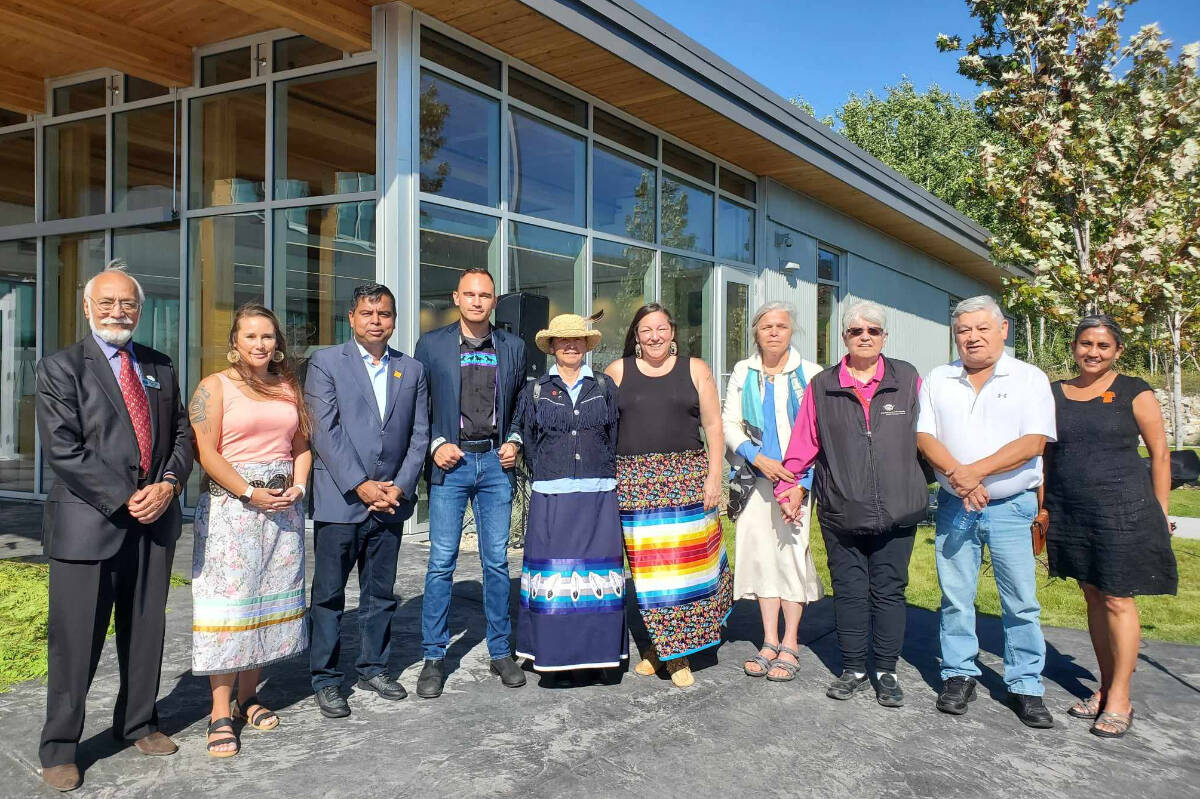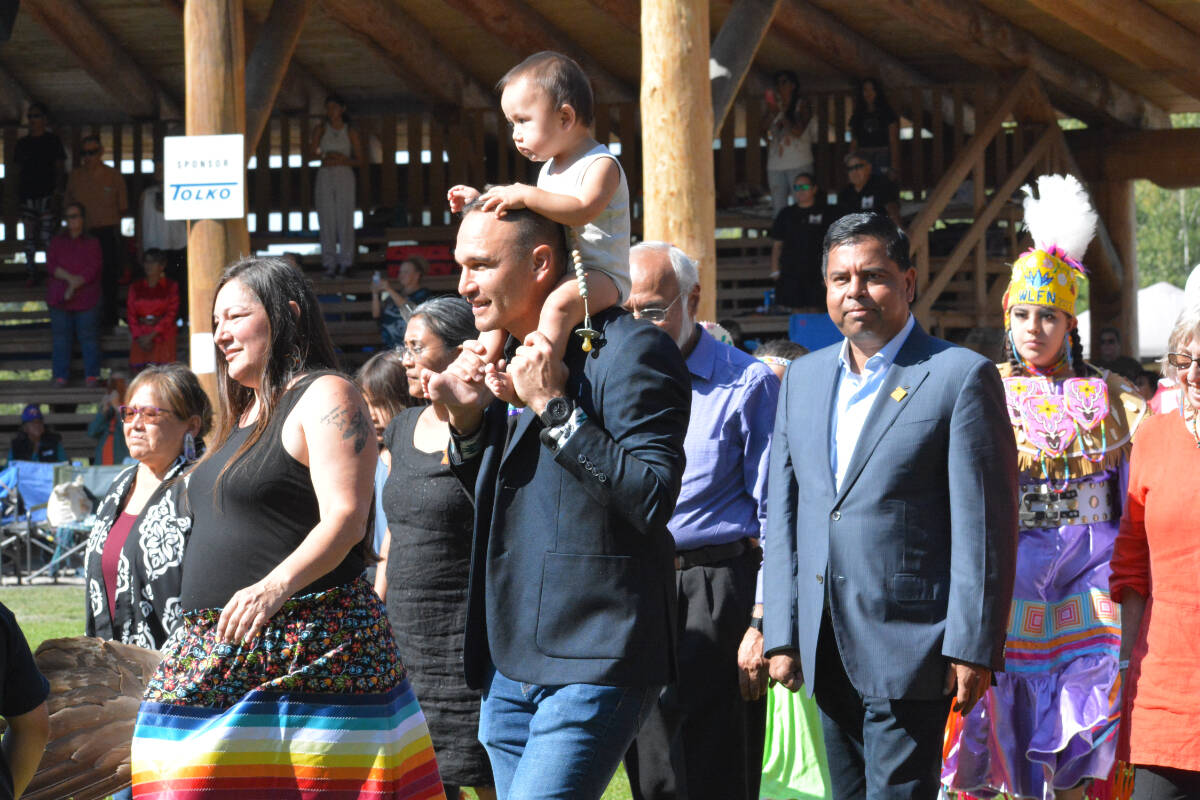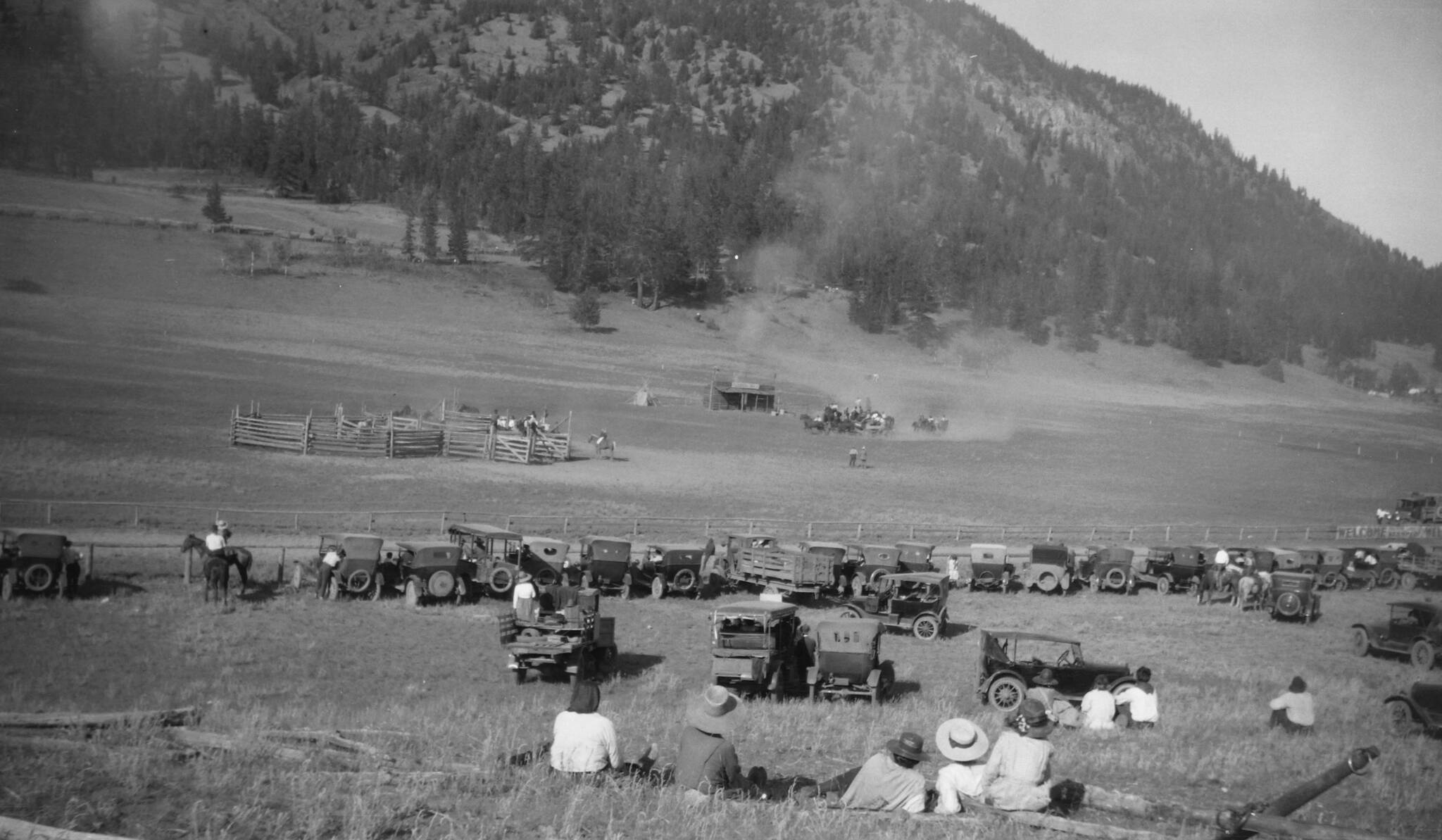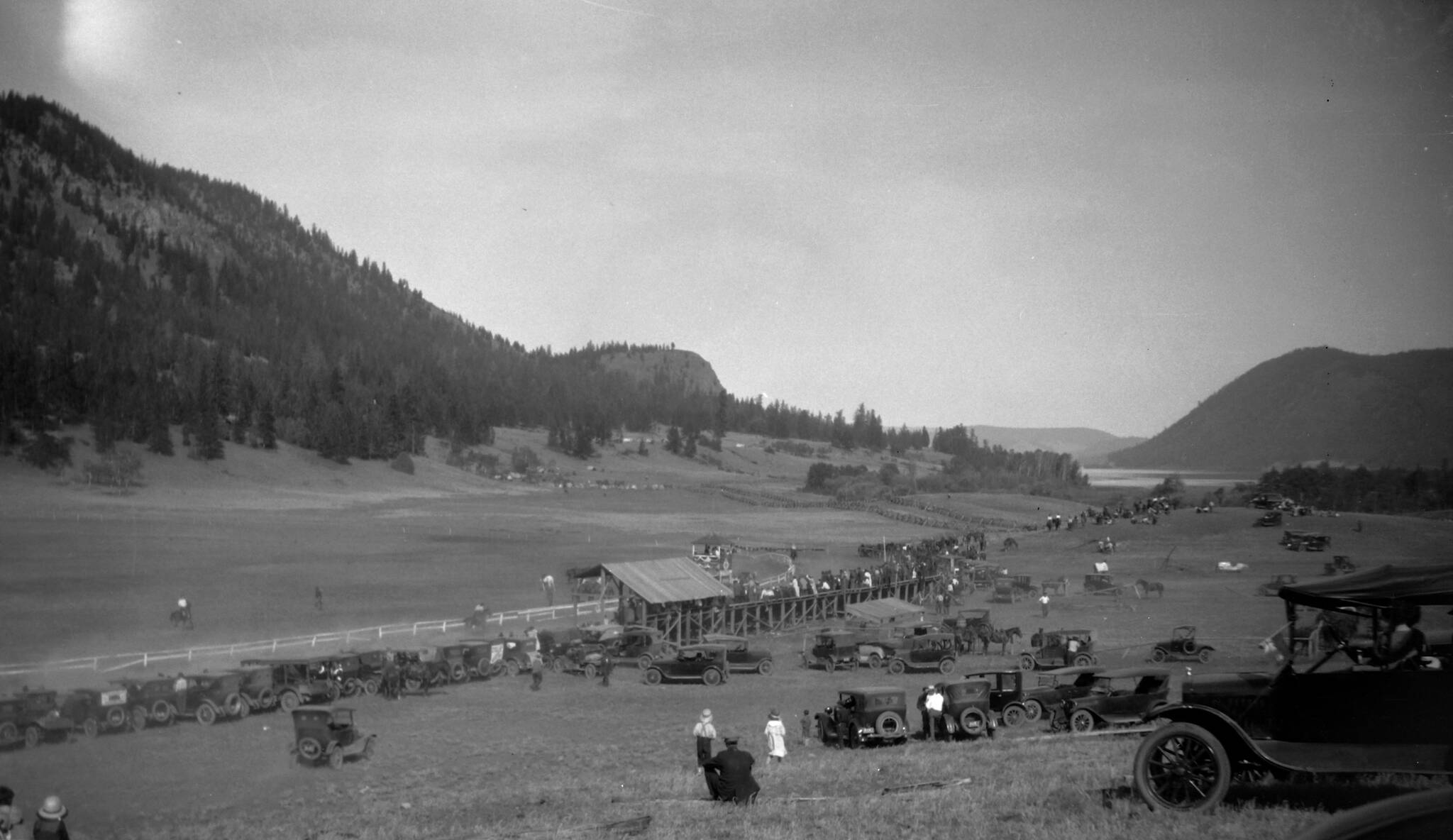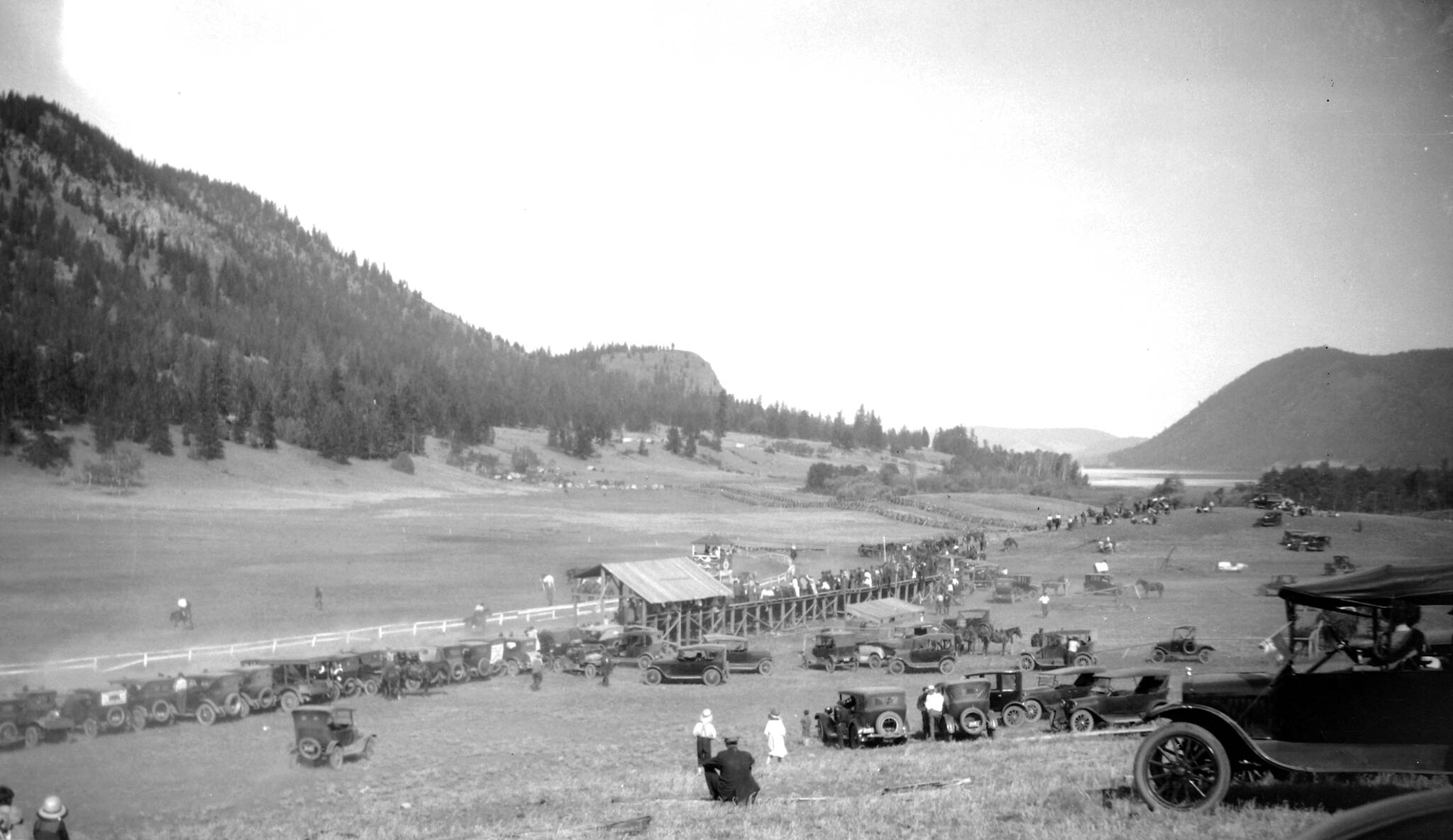Williams Lake First Nation (WLFN) Chief Willie Sellars accepted an apology from the federal government Sunday, Sept. 10 for the displacement of his nation from their village site in the 1800s.
Federal Minister of Crown-Indigenous Affairs, Gary Anandasangaree, travelled to Williams Lake First Nation to deliver the apology in person standing outside the WLFN administration building on Quigli Drive.
“It’s a historical day, not only for Williams Lake First Nation, but for Canadians,” Sellars said. “Days like today give us hope. Just thinking about how proud our ancestors would be looking down on us for holding the government accountable and seeing the government step up and stand beside us.”
Minister Anandasangaree also described it as an “historical moment,” and acknowledged his predecessor Minister Marc Miller who he said “advanced this critical work.”
“Canada recognizes that this was an important place for Williams Lake First Nation,” the minister said of the traditional village lands.
“The government of Canada accepts responsibility for this historic injustice and expresses its deepest regret and sincere apology to the people of Williams Lake First Nation for the harms suffered by being unlawfully and wrongfully dispossessed and separated from the village lands.”
He also delivered the apology in French.
Anandasangaree said the government is appreciative to have reached an agreed settlement with WLFN for $135 million and noted with the agreement WLFN will have the option to acquire and seek to add 1,400 acres to their reserve.
According to the WLFN website, Canada has no legal authority to return the village lands to WLFN.
Canada can only provide monetary compensation. The only way for WLFN to recover the village lands is by purchasing it from current owners who may be willing to sell it.
If WLFN purchased some of the village lands or other lands in the area, WLFN could apply to Canada to return the land to reserve status.
The minister recounted how Chief William gave permission to a settler in 1859 to build a cabin and cultivate a garden within the village lands but what happened afterwards corrupted the relationship with Williams Lake First Nation and its village lands.
In June 1861, he said, the federal government ordered that lands be set aside for First Nations, but that did not happen and most of the land was pre-empted by settlers, “contrary to colonial law,” and the First Nations were pushed off the land.
“Except for a few small parcels, Canada did not protect or provide compensation for any of the lands,” the minister said.
WLFN Coun. Chris Wycotte has been part of the specific claim team for 30 years and before the minister delivered the apology Wycotte spoke about his experience.
“I think for me, it was a journey that was unexpected. I didn’t think I would ever be here saying I played a big role in a claim.”
Back in 1985, he was an autobody repair guy working in an autobody shop in Williams Lake and he had enough of that and decided to go to school, he recalled.
That venture led him to study history and more specifically the history of his own people.
Eventually he was hired by the late and former Chief Rick Gilbert to work on a specific claim, doing research at the BC Archives in Victoria about traditional land use of Williams Lake First Nation people.
He became confident they could back up their claim and the unlawful pre-emption of lands that First Nations people were using and occupying.
“In 1879 Chief William wrote a letter to Victoria about our land being taken and our people suffering and starving.”
The first tribunal ruled in WLFN’s favour, but the federal government appealed and it was overturned, Wycotte said, but when WLFN took it to the Supreme Court of Canada they won.
“This claim now is a precedent-setting claim where pre-confederation claims can go to court now,” Wycotte said. “We kicked the door down on that one.”
All First Nations across Canada can rely on WLFN’s example to take a similar claim to court, he suggested.
Sellars said a community trust will be established with money from the specific claim for future generations to have something to look forward to.
“The annual interest that will be generated from the trust will allow us to do whatever we want. There is nothing that is out of the realm of possibility for Williams Lake First Nation.”
He said the vision will build on the efforts of Chief William when he wrote his letter to the government about the plight of his people.
“It’s really hard not to get emotional,” Sellars said as he acknowledged all the hard work, even from those members who have passed on.
With the apology event taking place just before the third day of the Speaking Our Truth Pow Wow got underway at the Chief William Pow Wow Arbor, Sellars said everyone was going to celebrate.
“It’s going to be a great day,” he added.
